
All informational conference registrations begin at 8:00 a.m., with the programs beginning promptly at 8:30 a.m. and ending at 12:15 p.m.
For more information, go to www.rrb.gov.
June
*Friday, June 1: Eagan, Minn., Best Western Dakota Ridge, 3450 Washington Dr., I-35E & Yankee Doodle Road
*Friday, June 8: Billings, Mont., Hilton Garden Inn of Billings, 2465 Grant Road
*Friday, June 8: Mansfield, Mass., Holiday Inn Mansfield, 31 Hampshire Street
*Friday, June 15: Portland, Ore., Hilton Garden Inn, Portland Airport, 12048 N.E. Airport Way
*Friday, June 15: Tinley Park, Ill., Tinley Park Convention Center, 18451 Convention Center Drive
*Friday, June 22: Barboursville, W. Va., Holiday Inn Hotel and Suites, 3551 U.S. Route 60 E.
*Friday, June 22: Duluth, Minn., Radisson Hotel Duluth Harborview, 505 West Superior Street
*Friday, June 29: Roanoke, Va., Hyatt Place, 5040 Valley View Blvd., North N.W.
September
*Friday, Sept. 7: Albany, N.Y., Albany Ramada Plaza, 3 Watervliet Ave. Ext.
*Friday, Sept.14: Fort Worth, Texas, Crowne Plaza Fort Worth South, The Fort Worth Room, 100 E. Altamesa
*Friday, Sept. 14: Renton, Wash., Holiday Inn, One South Grady Way
*Friday, Sept. 21: West Des Moines, Iowa, Hampton Inn, 7060 Lake Dr.
October
*Friday, Oct. 12: Little Rock, Ark., Comfort Inn & Suites Downtown, 707 Interstate 30
*Friday, Oct. 12 Pittsburgh: Greater Pa. Regional Council of Carpenters Union Hall, 650 Ridge Rd.
*Friday, Oct. 19 Wichita, Kan., Best Western Airport Inn and Conference Center, 6815 W. Kellogg (U.S. Hwy. 54)
*Friday, Oct. 26 Philadelphia: Sheet Metal Workers Local 19 Union Hall, 1301 S. Columbus Blvd.
*Friday, Oct. 26: Matthews, N.C., Hampton Inn, 9615 Independence Pointe Pkwy.
November
*Friday, Nov. 16: Metairie, La., Four Points by Sheraton, New Orleans Airport, 6401 Veterans Memorial Blvd.
December
*Friday, Dec. 7: Jacksonville, Fla., Holiday Inn (I-95 Baymeadows), 9150 Baymeadows Rd.
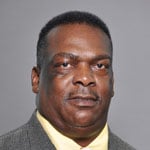 The relationship between railroads and bus companies has a long history not known by many UTU members.
The relationship between railroads and bus companies has a long history not known by many UTU members.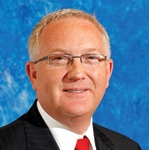 The chief executive of Los Angeles Metrolink, John Fenton, who has taken the lead among railroads nationwide in advancing, investing in and implementing positive train control (PTC), is departing after two years on the job to head the Florida-based short line holding company Patriot Rail.
The chief executive of Los Angeles Metrolink, John Fenton, who has taken the lead among railroads nationwide in advancing, investing in and implementing positive train control (PTC), is departing after two years on the job to head the Florida-based short line holding company Patriot Rail. WASHINGTON – The FRA has has strengthened its positive train control (PTC) team, naming Mark Hartong as senior scientific technical adviser for railroad electronic systems within the FRA’s Office of Safety.
WASHINGTON – The FRA has has strengthened its positive train control (PTC) team, naming Mark Hartong as senior scientific technical adviser for railroad electronic systems within the FRA’s Office of Safety.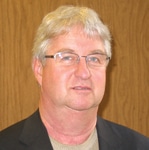 SPRINGFIELD, Mo. – UTU Missouri State Legislative Director Ken Menges is halfway toward a goal of creating a public rail commission to study means of expanding and financing improved multi-modal passenger transportation in his state and throughout the Midwest, with an emphasis on creating a track network capable of supporting 150-mph rail passenger service.
SPRINGFIELD, Mo. – UTU Missouri State Legislative Director Ken Menges is halfway toward a goal of creating a public rail commission to study means of expanding and financing improved multi-modal passenger transportation in his state and throughout the Midwest, with an emphasis on creating a track network capable of supporting 150-mph rail passenger service. Small can be big – especially when “small” is small lifestyle changes, such as weight loss, more exercise, a reduction in alcohol consumption, and kicking a tobacco habit.
Small can be big – especially when “small” is small lifestyle changes, such as weight loss, more exercise, a reduction in alcohol consumption, and kicking a tobacco habit.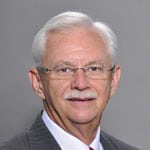 By UTU International President Mike Futhey –
By UTU International President Mike Futhey – 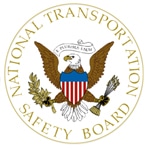 “Fatigue,” says the National Transportation Safety Board, was “the probable cause” of rear-end accident involving two BNSF freight trains near Red Oak, Iowa, April 17, 2011, that killed a UTU-member conductor and the train’s engineer.
“Fatigue,” says the National Transportation Safety Board, was “the probable cause” of rear-end accident involving two BNSF freight trains near Red Oak, Iowa, April 17, 2011, that killed a UTU-member conductor and the train’s engineer.